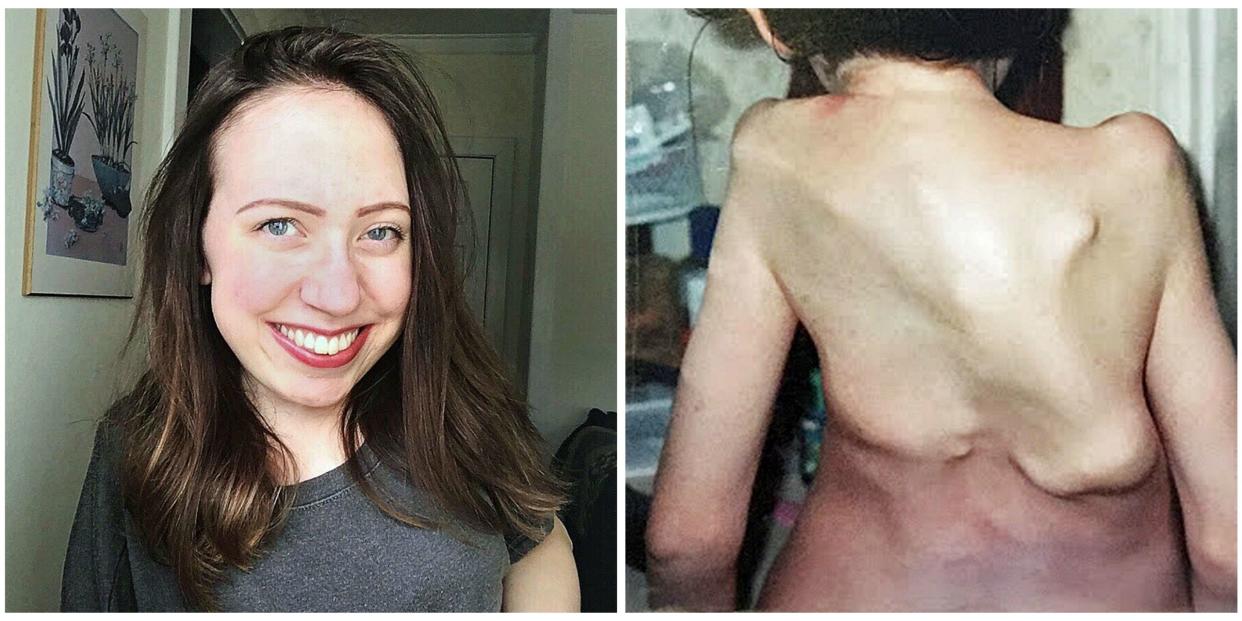Woman With "Stone Man Syndrome" Is Growing a Second Skeleton

Jasmin Floyd, a smart and adventurous 23-year-old, is slowly but surely turning to stone.
What started as a pea-sized bump on her big toe at birth progressed to inexplicable neck stiffness when she entered kindergarten. Her mother, RoJeanne Doege, assumed that her little girl was sleeping wrong - but then her neck became immobile.
Thus began the torrent of doctor appointments and misdiagnoses - experts threw out diseases like scoliosis, Lyme disease and even cancer. And then, in January 1999, a new doctor diagnosed Floyd with fibrodysplasia ossificans progressive (FOP), an incredibly rare genetic condition that calcifies muscles, tendons, ligaments and other soft, connective tissues to bone, forming a second skeleton over the organs. Floyd is one of 300 people in the U.S. living with FOP.
"The condition is often described as stone man syndrome, referring to the extra bone and it's like a person is turning into stone," Floyd explained to Caters.

Here's why that is: When we break a bone, our body produces enzymes to help heal it - the gene responsible for this only activates when bone needs to be repaired. But for Floyd, that gene is always on, explained Dr. Frederick Kaplan of the University of Pennsylvania School of Medicine. "The bone that forms is perfectly normal bone," Kaplan told CNN in 2016. "It's just too much of a good thing."
Because this gene is always activated, it's impossible to know when another area of Floyd's body will become permanently unmovable - flare-ups can be triggered by trauma (like a bump or fall) or by nothing at all. "It's intimidating," Floyd told CNN. "Something I can't control is trying to take over my body."
Since her initial diagnosis, extra bone growth has limited her ability to bend over and raise her arms above shoulder level. After a severe flare last summer, which affected the right side of Floyd's face, her jaw locked. She can't open her mouth wider than a centimeter.
FOP becomes critical when that second skeleton infiltrates the areas around major organs, compromising their function - if bone grows around the lungs, they cannot properly expand and deflate, rendering a patient unable to breathe. This has begun to happen to Floyd.

Despite this - and despite intense pain, which often tips over 10 on the pain scale - Floyd has done everything she can to prevent her condition from debilitating her life. The average life expectancy for patients with FOP is 45 years, but Floyd could be wheelchair or housebound by age 30. She knows she has to do as much as she can before it's too late.
Floyd told CNN that she travels whenever she can, attends concerts and revels in the little things that her body can still do, like washing dishes. For the things she can't naturally do, she's found creative solutions. "I have an extended bent hairbrush that my dad made for me so that I can brush my hair independently," she explained to Caters.
For now, Floyd blogs about her condition, gives talks to raise awareness for FOP and snuggles with her cat, Prancer. She is funny, accepting and optimistic - and with the help of mobility aids (which you can help her buy!), she hopes to move out and visit new cities so that she can enjoy her ephemeral period of independence.
As fleeting as her body's capabilities may be, if there's one thing FOP can't claim, it's Jasmin Floyd's spirit.
[h/t CNN]
You Might Also Like

